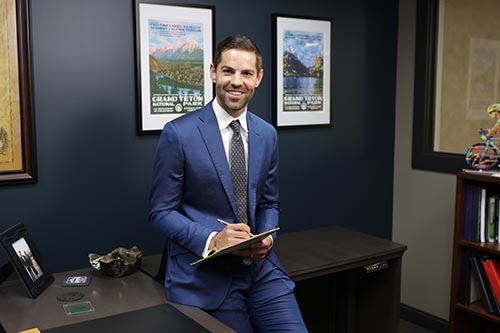4 Indiana Ave Valparaiso, IN 46383
in**@*******aw.com

In a medical setting, there are always a number of things that can go wrong. However, when danger is heightened because of a breakdown in communication between medical professionals, the patient and their family are the ones that suffer needlessly.
Communication errors are one of the most cited causes for injury in medical malpractice and numerous malpractice claims cite communication errors as a factor. What’s more troubling is that of those cases that involved communication errors, many of them resulted in the patient’s untimely death.
If you have suffered an injury or loss because of a medical communication error between your medical providers or practitioners, contact our Indiana medical malpractice lawyers at Langer & Langer to learn about your options to pursue a legal claim.
Communication is key. This is true of all of life but especially of a setting where the patient’s life hangs in the balance. The process of obtaining medical care has many parties involved and communication may fail or delay between any one of them.
There are two main types of communication errors, provider-to-provider and provider-to-patient.
Provider-to-provider communication errors include:
In comparison, examples of provider-to-patient communication errors include:
As patients, we have a reasonable expectation of proper care when submitting to treatment by a physician. This is known as the standard of care and failure to meet that standard is becoming increasingly due to a breakdown in communication that originates from the provider.
Proving that a communication error caused your injury is crucial in a medical malpractice claim. Our Indiana Healthcare Communication Error Attorneys have the knowledge and experience to thoroughly investigate your case, obtain medical records, and consult experts to build a strong claim on your behalf.
Things To Do If You Suspect a Communication Error:
Keep detailed records of all medical appointments, treatments, and communications.
Request copies of your medical records promptly.
Report concerns to your healthcare provider or facility.
Contact an experienced Indiana medical malpractice attorney as soon as possible.
At Langer & Langer, our Indiana medical malpractice attorneys sympathize with the frustrations and struggles of our clients. After a combined 100 years of practicing law, we have seen clients through some of the most difficult claims. Our goal is to see you adequately compensated for the undue burden you are carrying because of a medical professional’s failure to communicate.
As your legal team, you can be sure we are committed to full and constant communication with you as our client. Contact Langer & Langer for a consultation and learn more about filing a malpractice claim for communication errors. We can be reached at our office in Valparaiso at 219-464-3246.

© 2025 Langer & Langer • All Rights Reserved
Disclaimer | Site Map | Privacy Policy | Payment | Business Development Solutions by Blue Summit SEO.
Copyright © 2025 All Rights Reserved.
Past results do not guarantee any future outcome, and every case is different.
We improve our products and advertising by using Microsoft Clarity to see how you use our website. By using our site, you agree that we and Microsoft can collect and use this data.
Have legal questions or need expert advice? Our experienced team is here to help.
Langer & Langer
We firmly believe that the internet should be available and accessible to anyone, and are committed to providing a website that is accessible to the widest possible audience, regardless of circumstance and ability.
To fulfill this, we aim to adhere as strictly as possible to the World Wide Web Consortium’s (W3C) Web Content Accessibility Guidelines 2.1 (WCAG 2.1) at the AA level. These guidelines explain how to make web content accessible to people with a wide array of disabilities. Complying with those guidelines helps us ensure that the website is accessible to all people: blind people, people with motor impairments, visual impairment, cognitive disabilities, and more.
This website utilizes various technologies that are meant to make it as accessible as possible at all times. We utilize an accessibility interface that allows persons with specific disabilities to adjust the website’s UI (user interface) and design it to their personal needs.
Additionally, the website utilizes an AI-based application that runs in the background and optimizes its accessibility level constantly. This application remediates the website’s HTML, adapts Its functionality and behavior for screen-readers used by the blind users, and for keyboard functions used by individuals with motor impairments.
If you’ve found a malfunction or have ideas for improvement, we’ll be happy to hear from you. You can reach out to the website’s operators by using the following email
Our website implements the ARIA attributes (Accessible Rich Internet Applications) technique, alongside various different behavioral changes, to ensure blind users visiting with screen-readers are able to read, comprehend, and enjoy the website’s functions. As soon as a user with a screen-reader enters your site, they immediately receive a prompt to enter the Screen-Reader Profile so they can browse and operate your site effectively. Here’s how our website covers some of the most important screen-reader requirements, alongside console screenshots of code examples:
Screen-reader optimization: we run a background process that learns the website’s components from top to bottom, to ensure ongoing compliance even when updating the website. In this process, we provide screen-readers with meaningful data using the ARIA set of attributes. For example, we provide accurate form labels; descriptions for actionable icons (social media icons, search icons, cart icons, etc.); validation guidance for form inputs; element roles such as buttons, menus, modal dialogues (popups), and others. Additionally, the background process scans all the website’s images and provides an accurate and meaningful image-object-recognition-based description as an ALT (alternate text) tag for images that are not described. It will also extract texts that are embedded within the image, using an OCR (optical character recognition) technology. To turn on screen-reader adjustments at any time, users need only to press the Alt+1 keyboard combination. Screen-reader users also get automatic announcements to turn the Screen-reader mode on as soon as they enter the website.
These adjustments are compatible with all popular screen readers, including JAWS and NVDA.
Keyboard navigation optimization: The background process also adjusts the website’s HTML, and adds various behaviors using JavaScript code to make the website operable by the keyboard. This includes the ability to navigate the website using the Tab and Shift+Tab keys, operate dropdowns with the arrow keys, close them with Esc, trigger buttons and links using the Enter key, navigate between radio and checkbox elements using the arrow keys, and fill them in with the Spacebar or Enter key.Additionally, keyboard users will find quick-navigation and content-skip menus, available at any time by clicking Alt+1, or as the first elements of the site while navigating with the keyboard. The background process also handles triggered popups by moving the keyboard focus towards them as soon as they appear, and not allow the focus drift outside it.
Users can also use shortcuts such as “M” (menus), “H” (headings), “F” (forms), “B” (buttons), and “G” (graphics) to jump to specific elements.
We aim to support the widest array of browsers and assistive technologies as possible, so our users can choose the best fitting tools for them, with as few limitations as possible. Therefore, we have worked very hard to be able to support all major systems that comprise over 95% of the user market share including Google Chrome, Mozilla Firefox, Apple Safari, Opera and Microsoft Edge, JAWS and NVDA (screen readers).
Despite our very best efforts to allow anybody to adjust the website to their needs. There may still be pages or sections that are not fully accessible, are in the process of becoming accessible, or are lacking an adequate technological solution to make them accessible. Still, we are continually improving our accessibility, adding, updating and improving its options and features, and developing and adopting new technologies. All this is meant to reach the optimal level of accessibility, following technological advancements. For any assistance, please reach out to